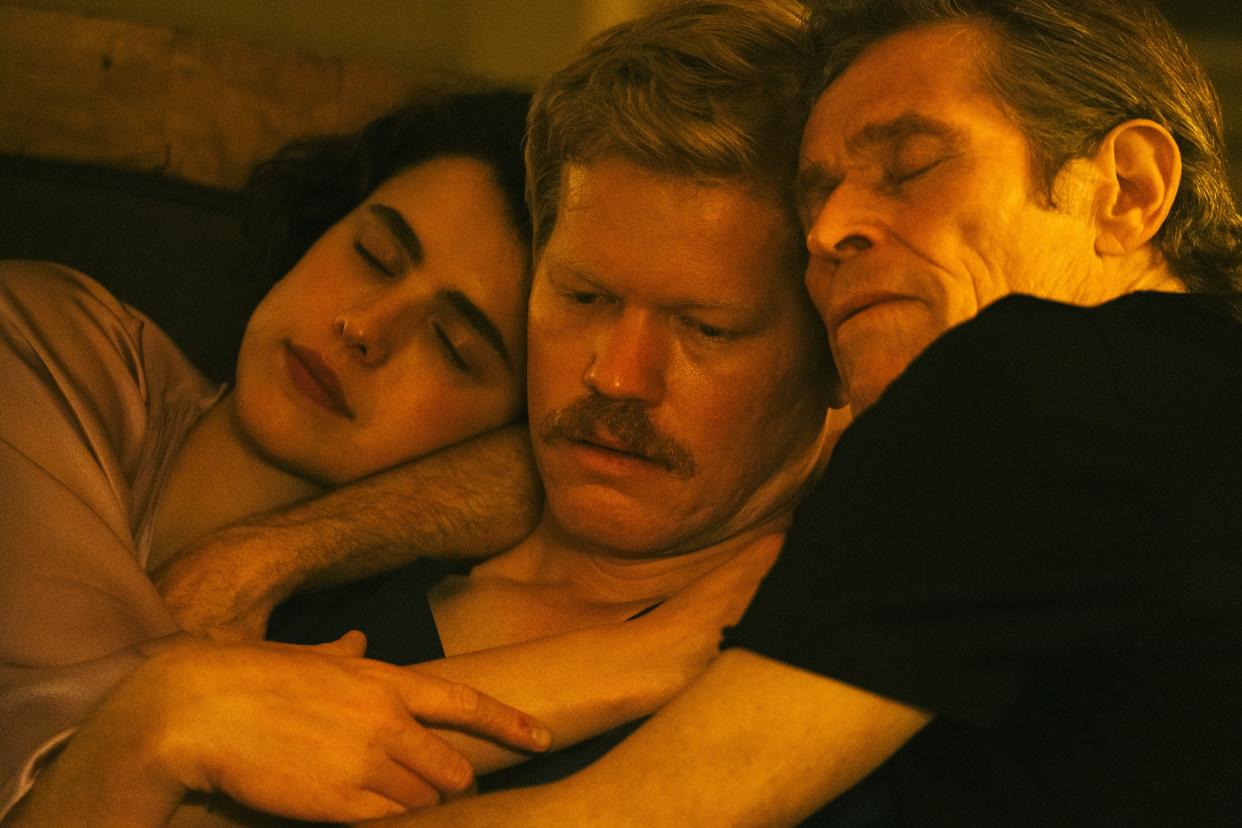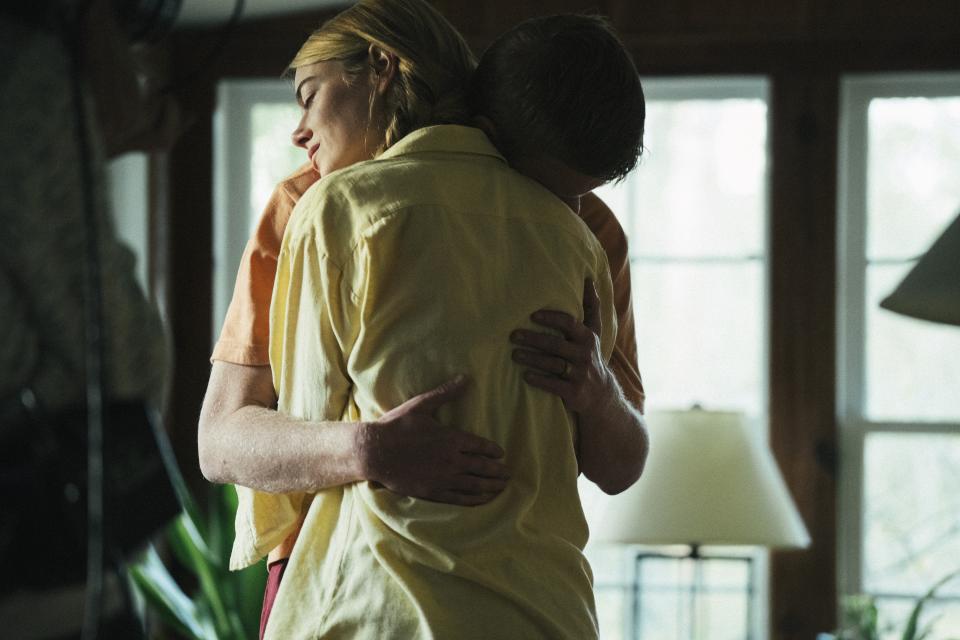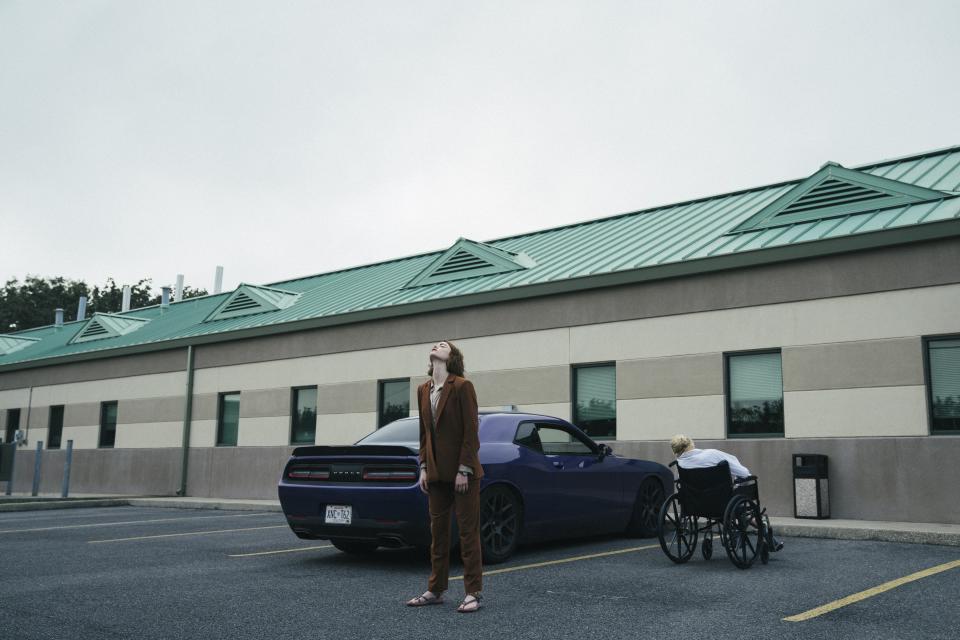‘Kinds of Kindness’ Needed the ‘Unexpected’ in Its Editing of Yorgos Lanthimos’s Dysfunctional Relationships and Alternate Realities

“Kinds of Kindness” serves as director Yorgos Lanthimos’ version of a twisted “Twilight Zone”-like anthology about dysfunctional relationships set in alternate realities, with an ensemble cast led by Jesse Plemons, Emma Stone, and Willem Dafoe.
Filmed on the edge of New Orleans to avoid any iconic reference to “The Big Easy,” this triptych black comedy explores the clash between authoritarian control and free will. Cut by Lanthimos’ go-to editor Yorgos Mavropsaridis, they went in sequential order and treated each part individually yet created a sense of progression by expanding the scope to encompass larger social settings.
More from IndieWire
The silent, bearded R.M.F. (Yorgos Stefanakos) is the lone recurring character. He is a delivery man in “The Death of R.M.F.,” a helicopter pilot in “R.M.F. Is Flying,” and a corpse in “R.M.F. Eats a Sandwich.” His throughline holds it all together and gives meaning to this dream-like structure with a startling revelation.
In “The Death of R.M.F.,” Robert (Plemons) endures daily abuse under the total control of his boss, Raymond (Dafoe), in exchange for a house, a car, and his wife, Sarah (Hong Chau). Robert fights back when asked to murder a compliant R.M.F. in a car crash, no matter how many times it takes, which results in his dismissal and total isolation. When Robert learns that he’s been replaced by Rita (Stone), he sets out to redeem himself.

In “R.M.F. Is Flying,” policeman Daniel (Plemons) becomes distraught when his marine researcher wife, Liz (Stone), is presumed dead after being lost at sea with her expedition, but, upon her miraculous return, becomes suspicious that she’s an impostor. This results in horrific tests of Liz’s devotion to him through self-mutilation.
In “R.M.F. Eats a Sandwich,” Emily (Stone) and Andrew (Plemons) belong to a sex cult run by Omi (Dafoe) and Aka (Chau) in a gated, lakefront house. They are tasked with finding a woman who can resurrect the dead, which leads them to twins Ruth and Rebecca (Margaret Qualley).
“It has to adapt to [Yorgos’] own way of thinking and also to engage the audience in an unexpected manner, in a new manner,” Mavropsaridis told IndieWire. “I do understand it is a hard film to watch. But I do see it as a mirror to our way of being. For example, you might say ‘Poor Things’ was more optimistic, but optimism in the 19th century was natural. It was the age of innocence. Science was just beginning, and everybody was hopeful that all would be well.
“But now we come to this age, and we cannot be so hopeful after two world wars and after seeing how humanity behaves,” he continued. “People are overwhelmed by what they see and don’t feel good about it. Yorgos sees what’s happened to the human condition and creates these predicaments. And one of these issues is about the relation between a man and a woman, how the dynamics changed, how the power influences all these relations.

‘The Death of R.M.F.’
Everything was built around surprise and shock, and the oppressive tone was established at the outset with Raymond’s cruel control of Robert. “That’s the only way in atmosphere to keep the audience engaged and also allowing them to be conscious of what they see and to think about it,” added Mavropsaridis. “Of course, we try to enter the subconscious of the audience on a deeper level.”
Cinematographer Robbie Ryan shot widescreen anamorphic in 35mm, and the aesthetic is more naturalistic than “Poor Things” or “The Favourite.” Paul is often viewed in close-up or medium shots in the empty space of his house or his office, with cuts to his nervous hands or feet. Dreams are conveyed in black-and-white to more surreal effect, such as Robert begging Raymond to take him back in the parking lot, followed by how the encounter actually plays out in color.
The director and editor also continued their technique of creating sequences out of separate scenes. For example, after Raymond fires Robert, he tries selling the broken sports memorabilia Raymond gave him to potential buyers (including Ayrton Senna’s charred racing helmet). The editor creates a parallel situation of Robert alone in his kitchen eating eggs and then trying to sell the strange memorabilia. “This allows certain scenes to interconnect with each other, to quicken the pace, and to save time,” Mavropsaridis said.
The scenes between Robert and Raymond get progressively more humiliating, particularly when the boss has him continually repeat his response to his request to ram his car into R.M.F. faster to kill him. “Asking him to come back again, reinforces the situation and that he controls him completely,” added Mavropsaridis. “He’s more the director giving instructions to the actor. Do it again, do it this way, do it that way. And then the break happens.”
‘R.M.F. Is Flying’
In “R.M.F. Is Flying,” Plemons plays off his versatility by morphing from the victim in “The Death of R.M.F.” to victimizer, while Stone utilizes her great charisma as Liz. But it turns into a horror film when Liz acts strangely upon her return, which arouses Daniel’s suspicion that she’s not his wife. Her feet are too large (which becomes a “Cinderella” joke), she suddenly likes chocolate and smokes, and she can’t even remember his favorite song. Then it turns to paranoia and Daniel wants to see how far this doppelganger will go to prove her love.
“So we create a situation that the audience doesn’t know what to believe,” Mavropsaridis said. “Is it really somebody else, or is he imagining these things? And then he starts testing her: What are you willing to sacrifice? It’s a funny line, but it’s horrible as well.”
First, Daniel suggests Liz cut off her thumb and cook it with cauliflower. “We insisted on the edit of the finger cutting that we left it a lot on Emma’s face for all the expression,” he added. “And I believe the end showed with the finger being cut comes unexpected.”
Then Daniel becomes more ghoulish by requesting that she cut out her own liver. Cut to Liz’s mangled, dead body slumped over, her stomach cut open, and the liver beside her amid pools of blood. As though this wasn’t horrifying enough, there was actually a scene cut where Daniel fed Liz her own liver. “And when you see the DVD, you will understand that it was maybe too overwhelming for the audience,” said Mavropsaridis. “Because the whole story was about cannibalism in a sense as well, so I was connected to that, but maybe it was too much. And also Yorgos had this idea to use the dogs in Liz’s dream [more brutality where they ruled over humans on the island she was stranded on], not in the usual way, but as a separate piece over the end titles, which was great.”
‘R.M.F. Eats a Sandwich’
Stone’s Emily is the central character in the third part, where she’s dominated by three men: her estranged husband, Joseph (Joe Alwyn), Plemons’ Andrew, and Dafoe’s Omi. Emily’s insistence on proving that Ruth is the special woman they are looking for is her way of gaining favor with the cult. However, a visit with Joseph at their home, where he drugs and rapes her, turns the cult against her.
“All of these people behave differently because they are controlled by a belief,” Mavropsaridis added. “And in this situation, it’s some kind of distorted idea of New Age. There are a lot of gurus and teachers that have strange ideas and influence people, but they live in a bubble. Emily has abandoned her family and there is a situation with the rape. We had more scenes shot, but we preferred to do it minimally and use the punctuation with the same notes of the piano [from composer Jerskin Fendrix].”
But Emily’s rejection by this cult turns her quest with Ruth dark and desperate, with unexpected results. “What a bad character she is here,” Mavropsaridis said. “She doesn’t care about this girl, she just cares about taking the woman to her teacher. Again, she’s wanting to prove your devotion, your obedience to be part of a family.”
Best of IndieWire
33 Queer and Homoerotic Horror Movies, from 'Psycho' and 'Hellraiser' to 'I Saw the TV Glow'
The Best Father and Son Films: 'The Tree of Life,' 'The Lion King,' 'Nowhere Special,' and More
Sign up for Indiewire's Newsletter. For the latest news, follow us on Facebook, Twitter, and Instagram.


